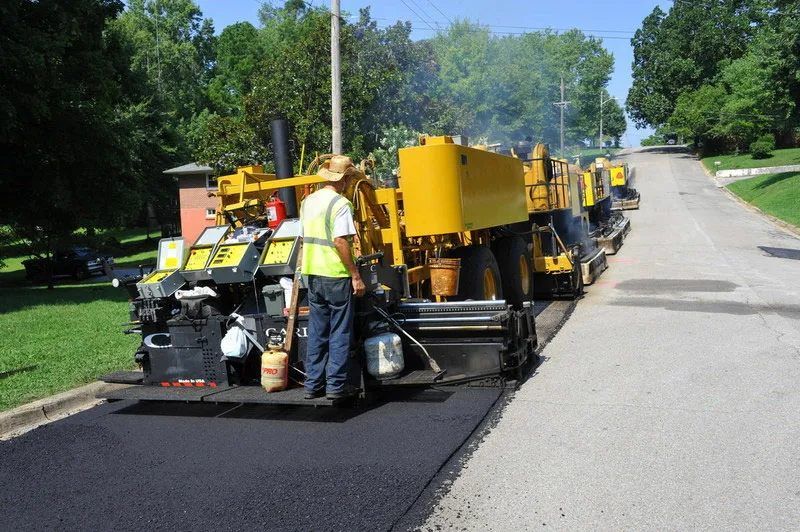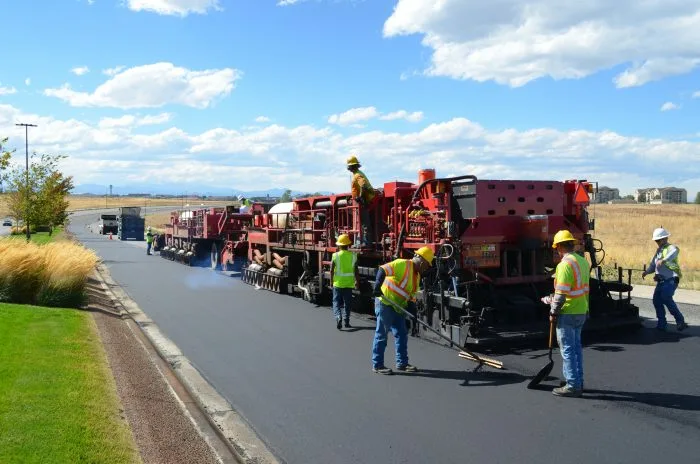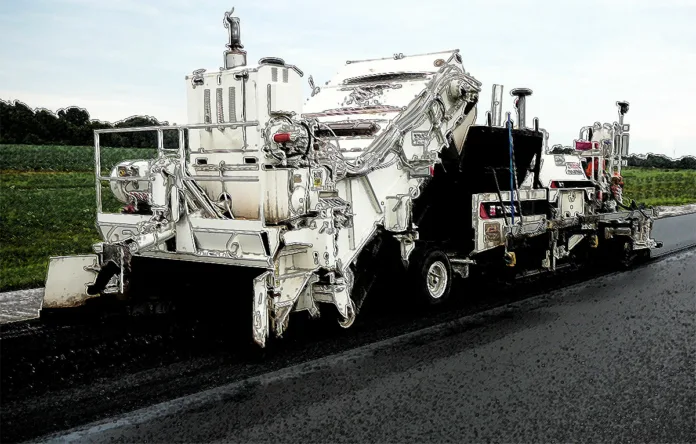Hot In-Place Recycling (HIR) is a road repair method that restores old asphalt by heating, loosening, and reusing the existing surface. The process involves heating the pavement, removing the top layer, mixing it with fresh asphalt or binder, and then compacting it to create a smooth and durable surface. HIR reduces waste, lowers costs, and extends pavement life while allowing quick repairs with minimal disruption.
Application Areas of Hot In-Place Recycling (HIR)
- Highways and Expressways – Used for resurfacing national and state highways with minimal traffic disruption.
- Urban Roads and City Streets – Ideal for repairing cracked, raveled, or aged asphalt in high-traffic urban areas.
- Rural and Low-Traffic Roads – Cost-effective maintenance solution for village roads and district highways.
- Airport Runways and Taxiways – Helps restore surface integrity without requiring complete reconstruction.
- Industrial and Port Roads – Suitable for roads handling heavy loads, preventing early pavement deterioration.
- Parking Lots and Service Roads – Used in commercial and industrial parking areas to extend pavement life.
Advantages of Hot In-Place Recycling (HIR)
- Reduces expenses by minimizing material use and transportation costs.
- Reuses existing asphalt, reducing waste and environmental impact.
- Repairs roads quickly, allowing for efficient project timelines.
- Enables partial lane closures, keeping traffic movement smoother.
- Restores the flexibility and strength of aged asphalt surfaces.
- Requires less fuel and resources compared to conventional resurfacing.
- Strengthens pavement, preventing further deterioration.
- Works on-site without removing or replacing entire layers.
- Maintains the original pavement height, avoiding drainage issues.
- Reduces the need for transporting fresh asphalt mix, cutting logistics costs.

Equipments Used in Hot In-Place Recycling
Preheaters
Preheaters are used in the initial phase of HIR to heat the existing asphalt pavement. They use infrared or radiant heat to soften the asphalt surface without burning or damaging it. This ensures that the material becomes workable for milling and remixing. These units, typically propane or diesel-fired, are mounted on trucks or trailers, allowing them to cover large road sections efficiently.
Milling or Scarifying Machines
Once the asphalt is sufficiently heated, milling or scarifying machines loosen and remove the softened surface. These machines have rotating teeth or blades that break up the asphalt to a specified depth. The milling depth is adjustable based on the pavement condition and the required rehabilitation thickness. Unlike traditional cold milling machines, HIR milling units are adapted to work with heated asphalt, ensuring smoother material removal and reducing aggregate damage.
Paving Screed or Re-Profiling Equipment
After remixing, the processed asphalt is laid back onto the road surface using a paving screed or re-profiling equipment. This equipment reshapes and levels the material, ensuring a smooth and even layer. Integrated screeds with adjustable heating elements keep the recycled asphalt workable during placement. Proper profiling is essential for achieving a uniform road surface, reducing surface irregularities, and preparing the layer for final compaction.
Rollers
The final stage in HIR involves compacting the recycled asphalt to achieve the required density and stability. Rollers apply pressure to eliminate air voids and ensure a durable pavement structure. Various types of rollers are used, including steel drum rollers for initial compaction and pneumatic tire rollers for finishing. The combination of vibratory and static compaction methods ensures proper bonding between the recycled and underlying layers. Well-compacted asphalt improves road performance and increases resistance to traffic loads and environmental conditions.

Specialized HIR Equipment
Heater Scarifier Machines
Heater scarifier machines are self-propelled units that combine heating and scarification functions. They first apply heat to soften the asphalt surface and then use rotating blades or tines to break up the top layer. This process loosens and rejuvenates the existing pavement, preparing it for mixing with fresh materials or binders. Heater scarifiers are primarily used for surface recycling, helping to restore minor road damage without the need for new asphalt.
Hot In-Place Recycler Units
Hot In-Place Recycler units are multi-functional machines that integrate heating, milling, mixing, and repaving into a single process. These machines efficiently work on large road sections, reducing the need for multiple equipment pieces. They first heat the asphalt, then mill and remix the material with a binder or fresh asphalt before finally compacting and leveling the surface. This method enhances road strength, lowers material costs, and speeds up the repair process.
Asphalt Remixing Plants (Mobile Units)
Mobile asphalt remixing plants are mounted on trucks or trailers and operate alongside HIR machines. These units receive the scarified asphalt from the recycler machines and mix it with rejuvenating agents, new asphalt, or stabilizers to improve its performance. The mixed material is then sent back for repaving. These mobile plants allow precise control over the composition of the recycled asphalt, improving road quality and extending pavement life.
Paving Machines with Integrated Recycling Systems
Paving machines equipped with integrated recycling systems perform heating, remixing, and repaving in a continuous process. These advanced machines are commonly used in repaving applications where a new asphalt overlay is required. By combining multiple functions into one system, they enhance efficiency, reduce costs, and minimize environmental impact. These machines are particularly useful for maintaining high-traffic roads, as they enable quick repairs with minimal disruption.
Conclusion
Hot In-Place Recycling (HIR) is an efficient, cost-effective, and eco-friendly method for asphalt pavement restoration. It minimizes waste, lowers costs, and extends road life while allowing quick repairs with minimal disruption.


